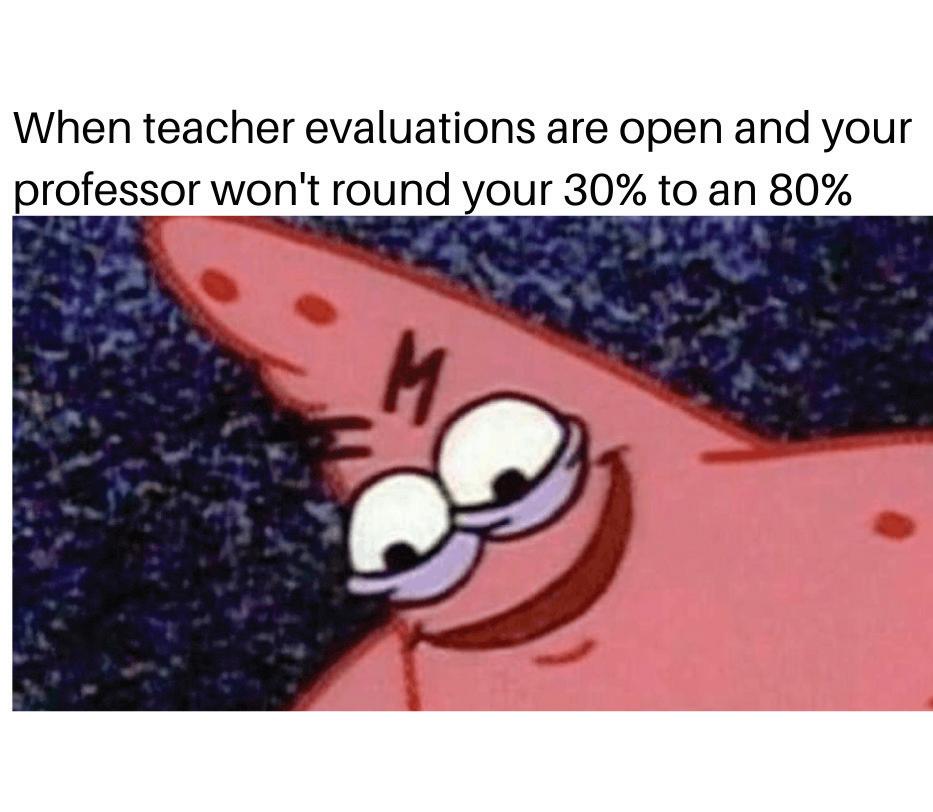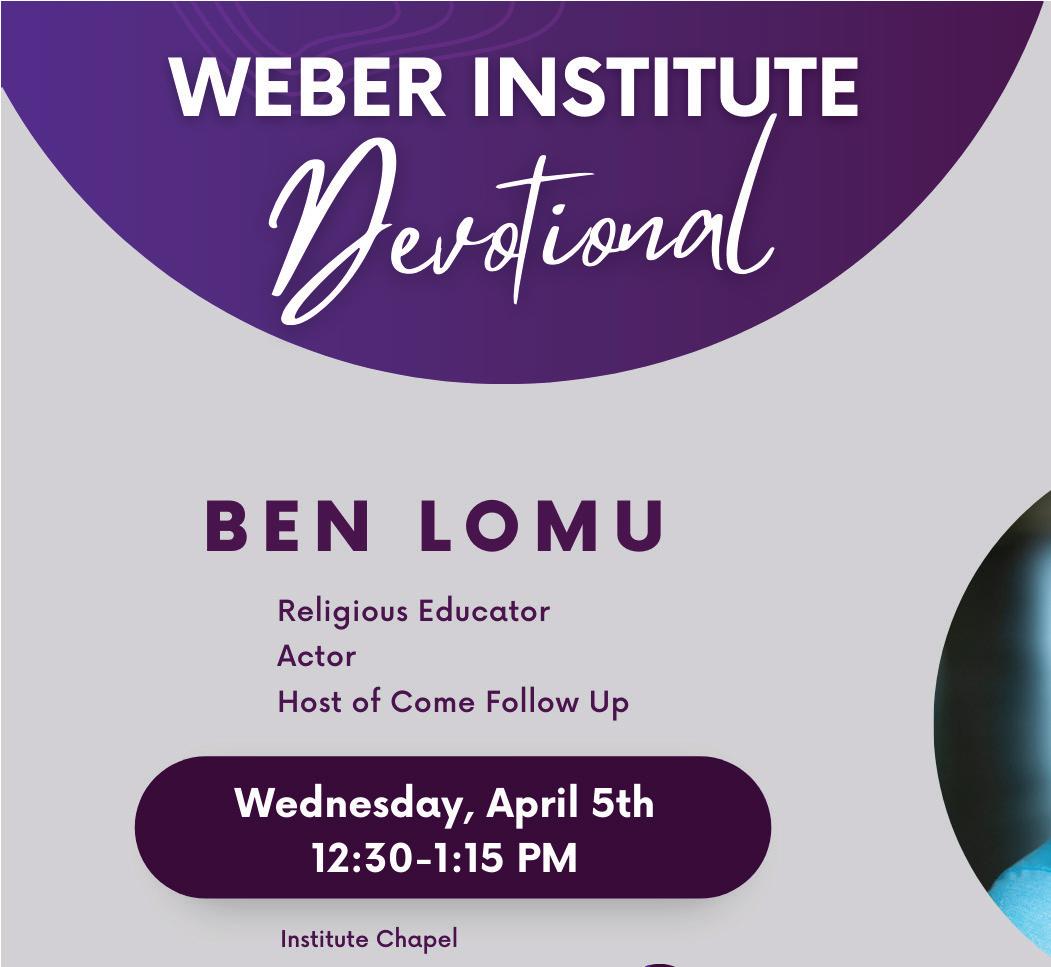SITTING DOWN WITH “THE 1619 PROJECT”

CREATOR



POET LOUISE GLÜCK VISITS WSU






SITTING DOWN WITH “THE 1619 PROJECT”

CREATOR



POET LOUISE GLÜCK VISITS WSU





NASA has recently announced that there will be a four-person mission named Artemis II who will be returning to explore the moon’s vicinity in 2024. How long has it been since humans have flown to the moon?
A. 20 years
B. 10 years
C. 50 years
D. 100 years
Former President Donald Trump has recently been indicted for various criminal charges, notably his hush money payment to adult film star, Stormy Daniels. What day was he officially indicted?
A. March 25
B. March 30
C. April 2
D. March 27
Actress Gwyneth Paltrow was recently sued for allegedly colliding into Terry Sanderson while on a ski trip in 2016. Sanderson was seeking over $300,000 in damages. For how much did Paltrow countersue Sanderson, minus attorney fees?
A. $500,000

B. $327

C. $42
D.$1
The cover of Vogue Philippines features the oldest person to ever grace the cover of Vogue: tattoo artist Apo WhangOd, also known as Maria Oggay. How old is she?
A. 98
B. 106
C. 104
D. 96















Weber State University students protested Utah Senate Bill 283, which intended to end Diversity, Equity and Inclusion programs in Utah higher education. The Haven J. Barlow Civic Leadership Forum hosted a panel to discuss the bill on March 29, with students gathering to peacefully share their concerns and questions.
The Haven J. Barlow Lecture Hall was overflowing with attendants, many holding poster-board signs in protest of SB 283. Students also filled a secondary room where the meeting was broadcast.

“I am the Black Student Senator,” Terri Hughes’ sign read. “EDI matters. Black education matters.”
Sen. John Johnson, Sen. Luz Escamilla, Rep. Angela Romero and podcast host Cari Bartholomew were the featured panelists.
“I’m laughing at so many of these signs,” Bartholomew said. “You don’t know — you don’t understand what you’re saying.”
Bartholomew is in favor of the bill that Johnson first proposed in February. The original bill was intended to prohibit funding from going into DEI programs and was substituted for a study of the programs, but it didn’t pass.

Johnson is concerned that DEI programs
push ideology on students. During the discussion, he asked whether the investment of taxpayer funds was worth the return. For many, his question wasn’t rhetorical, but a vivid and threatening one. One student had to consider losing their campus job if they participated in the protest.
“They told me that if I came to the protest, I needed to reconsider if I wanted to have a [job] tomorrow,” the student, who wished to stay anonymous, said. “They literally told me that if I came to this protest and it got violent, or if I was wearing anything from Weber State University, they were going to fire me.”
Romero, who represents District 25 which has a majority of people of color, shared her concern about SB 283 and bills similar to it. Romero also spoke about the exhaustion she and others experience in the need for frequent explanations for equity.
“We’re tired of people trying to erase us and erase our history and erase our communities,” Romero said.
Some student protestors stood with their backs to the panelists as Bartholomew spoke promoting the bill. She said the peaceful display of protest caused her to lose respect for them.
“Those are the kind of things that I wonder about when I see DEI,” Bartholomew said. “I see people who don’t know how to be mature.”
Protestors preparing to enter a panel held in the Lindquist Hall building, where panelists spoke about S.B. 283. KENNEDY CAMARENA | The Signpost POR DANIELA IMBRETT Traductor By GRETEL MONJAR ReporteroLos estudiantes de Weber State University protestaron contra el proyecto de ley 283 del Senado de Utah, que pretendía poner fin a los programas de diversidad, equidad e inclusión en la educación superior de Utah. El Foro de Liderazgo Cívico Haven J. Barlow organizó un panel para discutir el proyecto de ley el 29 de marzo, con estudiantes reunidos para compartir pacíficamente sus preocupaciones y preguntas.


El Haven J. Barlow Lecture Hall estaba repleto de asistentes, muchos de ellos con carteles en protesta por la SB 283. Los estudiantes también llenaron una sala secundaria donde se transmitió la reunión.
“Soy el Senador Estudiantil Negro”, decía el letrero de Terri Hughes. “El EDI importa. La educación negra importa”.
El senador John Johnson, la senadora Luz
Escamilla, la representante Angela Romero y la presentadora del podcast Cari Bartholomew fueron los panelistas destacados.
“Me estoy riendo de tantos de estos letreros”, dijo Bartholomew. “No saben, no entienden lo que están diciendo”.
Bartholomew está a favor del proyecto de ley que Johnson propuso por primera vez en febrero. El proyecto de ley original tenía la intención de prohibir la financiación de los programas DEI y fue sustituido por un estudio de los programas, pero no fue aprobado. A Johnson le preocupa que los programas de DEI impulsen la ideología en los estudiantes. Durante la discusión, él preguntó si la inversión de los fondos de los contribuyentes valía la pena.
Para muchos, su pregunta no era retórica, sino vívida y amenazante. Un estudiante tuvo que considerar perder su trabajo en el campus si participaba en la protesta.
“Me dijeron que si venía a la protesta, tenía que reconsiderar si quería tener un [trabajo] mañana”, dijo el estudiante, que deseaba permanecer en el anonimato. “Lit-
eralmente me dijeron que si venía a esta protesta y se volvía violenta, o si vestía algo de la Universidad Estatal de Weber, me iban a despedir”.
Romero, quien representa al Distrito 25 que tiene una mayoría de personas de color, compartió su preocupación sobre la SB 283 y proyectos de ley similares. Romero también habló sobre el agotamiento que ella y otros experimentan en la necesidad de explicaciones frecuentes por equidad.
“Estamos cansados de que la gente intente borrarnos y borrar nuestra historia y borrar nuestras comunidades”, dijo.
Algunos estudiantes que protestaban se pararon de espaldas a los panelistas mientras Bartholomew hablaba promoviendo el proyecto de ley. Ella dijo que la muestra pacífica de protesta le hizo perder el respeto por ellos.
“Ese es el tipo de cosas que me pregunto cuando veo a DEI”, dijo. “Veo gente que no sabe ser madura”.
Weber State University hosted the second annual Utah Southwest Regional Conference on Student Research in Gender and Women’s Studies in the Shepherd Union Building on March 30 and 31.











The event began on March 30 at 6:30 p.m., with a presentation titled “(Re) imagining Selu: Healing our communities through healing ourselves” by Devon Isaacs over Zoom. Isaacs is a citizen of the Cherokee Nation of Oklahoma and has received numerous awards throughout her research, which focuses on Indigenous communities. Through the story of a divine character called Selu sacrificing her body to nourish others, Isaacs taught how women tend to take on too much, in professional and personal roles. She emphasized that the ability to nurture those around them is a unique and powerful gift most women have, but it is most effective when women care for themselves, too.
The presentation ended with a Q&A, where Isaacs highlighted more of Cherokee tradition and provided advice on dealing







On the second day, student presentations were split up into three one-hour sessions, with three rooms that hosted three to four presenters each. The presenters consisted of students from Utah State University, Brigham Young University, Weber State and Amity University in India.
The presentations were around 15 minutes each and covered a wide range of topics.
Rachel Lyons, a student from BYU, analyzed the play “La Laureta” by Maria Martinez Abello, an 18th-century Spanish playwright who is almost completely unknown.

Lyons summarized the play and explained how the themes of social class and victim-blaming have been previously misunderstood.
The next presentation was from Emily Slater and Kadie Kunz from USU. They had conducted research regarding cosplaying scientists and worked with the organization Cosplay for Science throughout their research. With their research, they talked about how cosplay is connecting scientists to the public and is challenging previous
ideas of who scientists are supposed to be.
“The research question we brought here today is ‘How do scientists resist or challenge norms and assumptions about who participates in science?’” Slater said.
Their research consisted of interviews with a diverse range of students, to gain their insight into what a scientist is and how those norms are being challenged.
Another USU student, Jade Velazquez, gave a brief speech on her experience with microaggressions.
“An impactful way to prevent microaggressions is to educate yourself,” Velazquez said.


In the next session, BYU students Collette Burton and Alexandra Carlile Butterfield both presented on femininity in biblical lore.
Burton taught about a grotto in Jerusalem with a breast-shaped stalactite that drips white water. She described the lore behind it, and analyzed the symbolism and connotations of feminine fluids, like breast milk and menstrual blood in ancient Christianity.
Butterfield presented the “Golden Miracle” altar-piece, a unique piece of religious
art in that it depicts the lives of some of Jesus Christ’s female ancestors. Butterfield discussed the significance of their portrayals in the panels and pointed out patterns and meanings in the paintings.
WSU student Raissa Rohbock presented research on the experiences of women who were pregnant and gave birth in prison. She explained that because prisons are designed for men, they are often unprepared to care for an expecting mother.
“One of the primary questions we had was, ‘Were these institution measurements taking care of these women?’” Rohbock said.
Rohbock’s research concluded that prisons and jails are poorly prepared to help women through pregnancy and birth. This lack of proper care has resulted in multiple infant deaths.
After two sessions of presentations, a luncheon was provided. The final hourlong session was held, and the event was concluded due to the previously-planned walking tour being canceled due to weather conditions.
Weber State University students and local community members filled into the Austad Auditorium in the Browning Center to see Howard University professor Nikole Hannah-Jones on March 31.

Hannah-Jones is a writer for the New York Times Magazine and won the Pulitzer Prize in 2020 for her polarizing essay on democracy and slavery, “The 1619 Project,” which was initially released as a cover-to-cover edition of the NYT in August of 2019. Among Hannah-Jones’ other awards, she has achieved the MacArthur Fellowship, three National Magazine Awards, and two George Polk Awards.
“The 1619 Project” tackles slavery and its relationship to the founding of the United States of America. The essay was later turned into a book that became a New York Times #1 best seller, as well as a six-episode mini docu-series on Hulu that premiered in January of 2023.
Doug Fabrizio, a KUER radio host, spoke with Hannah-Jones about the “The 1619 Project” in front of the packed auditorium.
Hannah-Jones went into depth on her upbringing in Waterloo, Iowa and where her interest in history began when she was growing up.
“I was just really fascinated by how people lived a long time ago … I was always just interested in how studying the past — why things were like how they were,” Hannah-Jones said.
When Hannah-Jones was 11 years old, she wrote a letter to the editor of her local newspaper in response to Jesse Jackson, a Black candidate that Hannah-Jones felt was a good presidential candidate, dropping from the 1988 United States presidential election. This letter was published in her local paper, and from there her interest in journalism was born.
Hannah-Jones told the audience she began her career as a journalist when she joined her high school newspaper and started as an investigative journalist when discovering the date 1619 in a book titled “Before the Mayflower.”
The first ship to bring African slaves to North America, named the “White Lion,” came in 1619 — just one year before the Mayflower arrived on North American soil. Hannah-Jones was shocked that this was never taught to her in school.
“We didn’t learn about that,” Hannah-Jones said. “I just realized in that moment that history is not what happened. History is what we are taught about what happened — we are taught to remember about what happened,” Hannah-Jones
said.
Hannah-Jones’ goal with “The 1619 Project” is to get people to understand the reality of our country’s history and not the version of history we were taught was true. She feels that “The 1619 Project” has felt like something she has been building to her entire career as a journalist.
“I wanted to use this as an opportunity to do something really big,” Hannah-Jones said. “And not just talk about what happened all those years ago, but the way that what happened all those years ago would lay the foundation of our country that would come to be.”
Much of United States history has been purposefully mistaught, leading to a nation of citizens uninformed about the full history of their country. The goal of this project is to clear up those issues and bring forth a nation that is more aware of its past — both the ugly and the great.
“We traffic in transparency but don’t actually like being that transparent ourselves,” Hannah-Jones said.
After Hannah-Jones’ discussion with Fabrizio, a few WSU students got the opportunity to ask Hannah-Jones some questions.
The final question of the night asked Hannah-Jones what idea from “The 1619 Project” people should walk away with.
“That this nation owes not only a great
moral debt to Black Americans, but a great financial debt to Black Americans.” Hannah-Jones said. “I want you to come away with a charge that we can alleviate the primary cause of suffering of Black people in this country.”
The final essay in the collective “The 1619 Project” deals with this issue of reparations.
“We have to make financial repairs. We have to pay that debt and it is a collective debt…you have to own the debt,” Hannah-Jones said.
Camyrn Taylor, a communications major at Weber State, first discovered “The 1619 Project” while browsing Hulu.
“I really enjoyed the series when I watched it a few months back. When I heard that she was going to come talk here, I felt that this would be a good chance to learn more about this project,” Taylor said. “The project … was really informative and moving. I could really tell that this was something personal to Nikole.”
On April 1, Hannah-Jones visited the Shepherd Union building for a book signing as well as a discussion co-hosted by the NAACP chapter with those who attended the meeting.
American radio host Doug Fabrizio with Nikole Hannah-Jones at Weber State University. By MEGAN SWANN Reporter
By MEGAN SWANN Reporter
Students from schools across the nation were on Weber State University’s campus to attend the 38th National Undergraduate Literature Conference in Elizabeth Hall on March 30-April 1.
This year’s keynote speaker was Nobel prize-winning poet Louise Glück. The conference revolved around two interview sessions with Glück, as well as a banquet and reading at Timbermine Steakhouse.
Glück is the author of several books of poetry, and held the position of Poet Laureate from 2003-2004. Besides the Nobel, Glück has won several other awards and prizes, including a Pulitzer in 1993 for her book, “The Wild Iris.”
One purpose of the conference was to provide undergraduate student researchers and authors a chance to share their work. There were seven student sessions, each with 3-5 breakout rooms.
Students could present in a variety of different categories, either in creative works or research and criticism. Creative works included categories like fiction and poetry, while research saw many different sections including American literature, digital literacy and professional and technical writing.
Presenters from as far away as Texas A&M University came to the conference, with many of the other presenters being Weber State University students.
WSU professor Sunni Brown Wilkinson and student Charlie Vasquez conducted the first interview session on March 30, and professor Laura Stott did the second on March 31. During these sessions, Glück talked about writing during the pandemic, writer’s block and age.
Glück had left California to go back to her home in Cambridge when the pandemic first started. She recalled that usually, when coming home after traveling, she felt as if everything had changed. Nothing looked right. In the past, Glück fixed this by filling the space with friends, but due to social distancing and pandemic safety precautions, this was no longer an option.
“Winter Recipes from the Collective” is
a book of poetry she completed during the pandemic. Against the many mixed reviews, Glück feels her best poems were produced during this time. Transformation and change are significant factors in Glück’s writing. This change was no different.
“The advantage of living in time is each successive period brings its gifts and sorrows and these produce different bodies of work,” Glück said during the banquet dinner.
“Winter Recipes from the Collective” was a slower book for her to write because there were two years where she couldn’t write anything. This period filled her with despair, but she didn’t want to force anything.
After not being able to write for a while, Glück decided she had to move on and got a teaching job. Shortly after this, she found inspiration again and was exhilarated to continue what she’d been doing since she was a child.
Glück also discussed how age has affected her writing. She was surprised she’s got so many things to say about old age, but it is just a different transformation.
“Any condition that affords you new information is a gold mine,” Glück said.
Glück added that these transformations and new experiences give you more materi-
al for writing. She gave multiple readings of her work, despite letting the audience know she prefers her work to be silently read, a private and personal moment with the words on the page.
“I don’t feel well listening to myself while I read,” Glück said.
At the first session, Glück read a poem titled “An Endless Story,” and time was set aside at the banquet for her to read multiple pieces including “Landscape,” “The Red Poppy” and a prose poem called “Theory of Memory.”
Between each reading, Glück would provide context as to what inspired the piece. For the poem “Descending Figure,” Glück said it was based on her discovery that her parents had had a child before her, but the baby died at 9 days old.
Glück was very candid about her writing process. She said she does not have a favorite poetry collection, and she doesn’t have a solid process for creating a book or setting aside a particular time or space for writing.
Glück said the creation of her books has been different with each new release. Learning how to create one book, for her, did not help her know what to do with the next one.
Despite not having answers for these
questions, Glück did give other pieces of advice for poets and writers in the audience.
Glück said the best thing a new writer can do is to be patient and develop a tough skin. There are periods where a writer’s work will be ignored or slightly acknowledged, and they just have to continue and continue trying.
Glück also emphasized the importance of how the poem should be an experience for both the writer and the reader.
The second day of Glück’s session was cut short due to the weather, but she still managed a short book-signing at the end.
Glück spoke of dreams that influenced her writing, including one about a bonsai tree and one about making a sandwich out of preserved moss.
“You should live your life following the enthusiasms that appear to you,” Glück said. Other voices were also recognized during the conference.
Mikel Vause, co-director of NULC and professor of English at WSU, was celebrated during the banquet. This conference is the last that he will co-direct, as he is retiring. He was thanked by his co-director, daughter and WSU professor Sarah Vause, celebrating his work in running the previous 38 years of the conference.
On the evening of March 31, students had an opportunity to read their work at an open mic hosted by Metaphor, WSU’s literary journal. Seventeen authors shared their poetry, creative nonfiction and short stories. Bailey O’Leary, editor-in-chief of Metaphor, read some of her work as well as Metaphor’s advisor, Jan Hamer.
The third and final day of NULC, April 1, consisted solely of student sessions. The conference concluded at 11:30 a.m.
Between the events, the conference was a chance for writers to connect. There were social events like the Favorite Poems Project and the banquet, where participants had a chance to mingle with the others at their table.
NULC occurs every year, and it is something students in all majors can consider submitting their writings for next year.
Laura Stott listening to Louise Glück answer a question on how she writes and when she likes to write. KENNEDY CAMARENA | The Signpostwhere children discover, explore & grow
Need child care while you are in class or partaking in academic events?
Get low-cost hourly child care for children 2-9 years old.
Find more information and apply at: weber.edu/nontrad/childcare.html



Traductor
POR MEGAN SWANN
Reportero
Estudiantes de todo el país se dieron cita en el campus de la Universidad Weber State para asistir a la 38ª Conferencia Nacional de Literatura de Pregrado, celebrada en Elizabeth Hall del 30 de marzo al 1 de abril.
La oradora principal de este año fue la poetisa ganadora del Premio Nobel Louise Glück. La conferencia giró en torno a dos sesiones de entrevistas con Glück, así como un banquete y una lectura en Timbermine Steakhouse.
Glück es autora de varios libros de poesía y ocupó el cargo de Poeta Laureada entre 2003 y 2004. Además del Nobel, Glück ha ganado otros premios y galardones, entre ellos un Pulitzer en 1993 por su libro “The Wild Iris”.
Uno de los objetivos de la conferencia era ofrecer a los estudiantes investigadores y autores universitarios la oportunidad de compartir sus trabajos. Hubo siete sesiones de estudiantes, cada una de ellas con 3-5 salas de debate.
Los estudiantes podían presentar sus trabajos en distintas categorías, ya fueran trabajos creativos o de investigación y crítica. Las obras creativas incluían categorías como ficción y poesía, mientras que la investigación se dividió en diferentes secciones, como literatura estadounidense, alfabetización digital y escritura profesional y técnica.
A la conferencia acudieron ponentes de lugares tan lejanos como la Universidad A&M de Texas, y muchos de los otros ponentes eran estudiantes de la Universidad Estatal de Weber.
La profesora de la WSU Sunni Brown Wilkinson y el estudiante Charlie Vasquez dirigieron la primera sesión de entrevistas el 30 de marzo, y la profesora Laura Stott la segunda el 31 de marzo.

Durante estas sesiones, Glück habló sobre la escritura durante la pandemia, el bloqueo
del escritor y la edad.
Glück había dejado California para volver a su casa en Cambridge cuando empezó la pandemia. Recordaba que, normalmente, cuando volvía a casa después de viajar, tenía la sensación de que todo había cambiado. Nada parecía estar bien. En el pasado, Glück lo arreglaba llenando el espacio con amigos, pero debido al distanciamiento social y a las precauciones de seguridad ante la pandemia, esto ya no era una opción.
“Recetas de invierno del colectivo” es un libro de poesía que terminó durante la pandemia. A pesar de las numerosas críticas encontradas, Glück cree que sus mejores poemas se produjeron durante esta época. La transformación y el cambio son factores significativos en la escritura de Glück. Este cambio no fue diferente.
“La ventaja de vivir en el tiempo es que cada periodo sucesivo trae sus dones y sus penas, y éstos producen diferentes cuerpos de trabajo”, dijo Glück durante la cena del
banquete.
“Recetas de invierno de la colectividad” fue un libro más lento de escribir para ella porque hubo dos años en los que no pudo escribir nada. Este periodo la llenó de desesperación, pero no quiso forzar nada.
Después de no poder escribir durante un tiempo, Glück decidió que tenía que seguir adelante y consiguió un trabajo como profesora. Poco después volvió a encontrar la inspiración y se sintió entusiasmada por continuar con lo que llevaba haciendo desde niña.
Glück también habló de cómo la edad ha afectado a su escritura. Le sorprendió tener tantas cosas que decir sobre la vejez, pero se trata de una transformación diferente.
“Cualquier condición que te proporcione nueva información es una mina de oro”, dijo Glück.
Glück añadió que estas transformaciones y nuevas experiencias le dan más material para escribir. Realizó varias lecturas de su
obra, a pesar de que hizo saber al público que prefiere que su trabajo se lea en silencio, un momento privado y personal con las palabras en la página.
“No me siento bien escuchándome a mí misma mientras leo”, dijo Glück. En la primera sesión, Glück leyó un poema titulado “Una historia interminable”, y en el banquete se reservó tiempo para que leyera varias piezas, entre ellas “Paisaje”, “La amapola roja” y un poema en prosa titulado “Teoría de la memoria”.
Entre cada lectura, Glück explicaba en qué se había inspirado la obra. En el caso del poema “Figura descendente”, Glück explicó que se basaba en su descubrimiento de que sus padres habían tenido un hijo antes que ella, pero el bebé murió a los 9 días de nacer.
Glück fue muy sincera sobre su proceso de escritura. Dijo que no tiene una colección de poesía favorita, y que no tiene un proceso sólido para crear un libro o reservar un tiempo o espacio concreto para escribir.
Glück afirma que la creación de sus libros ha sido diferente con cada nueva publicación. Para ella, aprender a crear un libro no le ayudó a saber qué hacer con el siguiente.
A pesar de no tener respuestas para estas preguntas, Glück dio otros consejos a los poetas y escritores del público.
Glück dijo que lo mejor que puede hacer un escritor novel es tener paciencia y desarrollar una piel dura. Hay periodos en los que el trabajo de un escritor será ignorado o ligeramente reconocido, y sólo tiene que continuar y seguir intentándolo.
Glück también destacó la importancia de que el poema sea una experiencia tanto para el escritor como para el lector.
El segundo día de la sesión de Glück se vio interrumpido por el mal tiempo, pero al final firmó un libro.
Glück habló de los sueños que influyeron en su escritura, incluido uno sobre un bonsái y otro sobre hacer un bocadillo con musgo en conserva.
“Debes vivir tu vida siguiendo los entusiasmos que se te aparecen”, dijo Glück.
Otras voces también fueron reconocidas
POR MARIANNA LOPEZ-LURITTA Maggie Draper reading her poem called “I Can’t Fall Asleep In the Bed I Grew Up In.” KENNEDY CAMARENA | The Signpostdurante la conferencia.
Mikel Vause, codirector de NULC y profesor de inglés en la WSU, fue homenajeado durante el banquete. Esta conferencia es la última que codirigirá, ya que se jubila. Su codirectora, la hija y profesora de la WSU Sarah Vause, le dio las gracias por su labor durante los 38 años anteriores de la conferencia.

La noche del 31 de marzo, los estudiantes tuvieron la oportunidad de leer sus obras en un micro abierto organizado por Metaphor, la revista literaria de la WSU. Diecisiete autores compartieron su poesía, no ficción creativa y relatos cortos. Bailey O’Leary, redactora jefe de Metaphor, leyó algunas de sus obras, así como la asesora de Metaphor, Jan Hamer.

El tercer y último día de la NULC, el 1 de abril, consistió únicamente en sesiones de estudiantes. La conferencia concluyó a las 11.30 am.


Entre los actos, la conferencia fue una oportunidad para que los escritores se relacionaran. Hubo actos sociales como el Proyecto de Poemas Favoritos y el banquete, en el que los participantes tuvieron la opor-
tunidad de relacionarse con los demás en su mesa.


La NULC se celebra todos los años, y los estudiantes de todas las carreras pueden considerar la posibilidad de presentar sus escritos para el año que viene.
Share this story at thesignpostwsu.com

With teams like Florida Atlantic University and San Diego State University landing in the Final Four, this year’s NCAA men’s basketball tournament has featured multiple upsets.
That said, while some small-programs like Furman University, Fairleigh Dickinson University and Princeton University were able to go further than the round of 64, Montana State University became the 16th Big Sky conference champion in a row to not win a game during March Madness.
The last time a Big Sky team advanced to the round of 32 was 2006, when the University of Montana beat the University of Nevada 87–79 on March 16. After a 17-year drought, it’s time to look at what the next conference champion needs to win in March.
Before the Grizzlies, the last Big Sky team to advance to the round of 32 was Weber State University in 1999, after beating the University of North Carolina 76–74.
During their wins, Montana was a No. 12 seed and the Wildcats a No. 14 seed. Comparing stats, both teams averaged 79 points
per game. The teams performed similarly on defense as well, with the Grizzlies allowing 71 points per game and Weber State giving up 73.
From beyond the arc, the Wildcats made 6.4 3-pointers per game, shooting .377. Montana averaged slightly more from 3-point range by averaging 7.4 points from beyond the arc and shooting .386.
On the glass, both teams averaged just over 35 rebounds per game. They also made it to the line at about the same rate, averaging just over 21 attempts from the charity stripe.

While some stats between the two are close, the team’s lineups are fairly different from each other. Both had three players averaging over 10 points, but Montana’s five top scorers averaged 73.8% of their team’s points per game while the Wildcats averaged 80.7%.
Weber State’s guards Eddie Gill and Noel Jackson were able to create shots and feed to players like forward Harold Arceneaux, who averaged 22.3 points per game.

The Grizzlies relied more on balance with forward Andrew Strait and Kevin Criswell both averaging around 16 points per game. Also, Montana’s bench averaged over 6 more points per game than the Wildcats did.
Looking at Montana and Weber State’s winning teams side by side, there are definitely similarities. That said, both teams are over 17 years old. There are some current examples that can help answer the question of what it takes. What made Furman successful against the University of Virginia this year was their ability to score from beyond the arc. On average, the team made 9.4 3-pointers per game, shooting .344. During their season, the Paladins averaged 80.9 points per game, overwhelming the Cavaliers, who typically relied on their strong defense to take pressure off their low-scoring offense.
A similar case can be made for Fairleigh Dickinson University, who made an average of 8.2 3-pointers per game and shot .237 from beyond the arc. That said, the Knight’s secret weapons were forward Cameron Tweedy and guard Heru Bligen, two bench players who combined for 16 points. Bench production also helped Princeton University take down the University of Arizona 59–55 as forward Zach Martini and guard Blake Peters combined for 16 points.
Share this story at thesignpostwsu.com




While there’s no perfect model, teams that are able to make surprises in the tournament typically have high-powered offenses that can score from beyond the arc. While great overall performance from the bench helps, having just two players who can sub in and score seems to trouble higher-seeded teams.
That said, there’s a reason it’s called March Madness. A predictable tournament doesn’t exist and neither do certain wins. The Big Sky receives a tournament bid every year for the conference championship, meaning the next round of 32 for a Big Sky champion could be just around the corner.

POR


Con equipos como la universidad Florida Atlantic y la universidad San Diego State que están en la penúltima ronda, el torneo de baloncesto de la NCAA de este año ha tenido varias victorias inesperadas.

Este dicho, aunque algunas pequeñas programas como las de la universidad Furman, la universidad Fairleigh Dickinson y la universidad Princeton podían avanzar más allá de la ronda de 64, la universidad Montana State llegó a ser el decimosexto campeón consecutivo de la conferencia Big Sky a no ganar ningún partido durante el March Madness.
La última vez que un equipo Big Sky avanzó a la ronda de 32 fue el año 2006, cuando la universidad de Montana ganó contra la universidad de Nevada con puntaje 87–79 el 16 de marzo. Después de una sequía de 17 años, ya es el tiempo de ver lo que necesita para ganar el próximo campeón de la conferencia en marzo.
Antes de los Grizzlies, el último equipo de Big Sky que avanzó a la ronda de 32 era la universidad Weber State en el año 1999, después de ganar contra la universidad de Carolina del Norte 76-74.
Durante estas victorias, Montana tenía valoración de número doce y los Wildcats de número catorce. En comparación, ambos
equipos tenían un puntaje medio de 79 puntos por cada partido. Los equipos tenían rendimientos similares de defensa también, con un puntaje medio de cada oponente de los Grizzlies de 71 puntos por cada partido, y uno de cada oponente de los Wildcats de 73 puntos.
Desde fuera de la línea de tres puntos, los Wildcats marcaron un promedio de 6,4 tiros por partido, un porcentaje de éxito de ,377. Montana tenía un promedio levemente mejor fuera de la línea con un promedio de 7,4 puntos por partido, un porcentaje de ,386. Ambos equipos tenían promedio de 35 rebotes por partido. También tenían un similar cantidad de tiros libres, con un promedio de 21 intentos.
Aunque algunas estadísticas son similares, los jugadores son un poco distintos entre los dos. Ambos tenían tres jugadores con puntaje medio de más de diez puntos, pero los mejores cinco jugadores de Montana tenían un promedio de 73,8% de los puntos del equipo por partido mientras que los mejores cinco de los Wildcats tenían un promedio de 80,7%.
Eddie Gill y Noel Jackson, jugadores de defensa de Weber State, podían crear oportunidades de marcar goles y dar el balón a los delanteros como Harold Arceneaux, que tenía el promedio de 22,3 puntos por partido.
Los Grizzlies dependían más en el equilibrio con sus delanteros Andrew Strait y Kevin Criswell con promedio de 16 puntos por partido. También, el banquillo Montana tenía un promedio más grande que el de los Wildcats por seis puntos por partido.
¿Qué calidad de juego es necesario ahora?
Al ver a los equipos de Montana y Weber State que ganaron, se pueden ver las similitudes. A pesar de eso, ambos equipos eran de más de 17 años en el pasado. Hay algunos ejemplos actuales que pueden ayudar a contestar la pregunta de qué cuesta ganar.
Lo que dio el éxito a Furman en su partido contra la universidad de Virginia este año era su habilidad de marcar goles desde fuera de la línea de tres puntos. Su promedio era 9,4 goles de tres puntos por partido, con porcentaje de ,344. Durante su temporada, los Paladins tenían un promedio de de 80,9 puntos por partido, lo que aplastó a los Cavaliers, que mayormente dependían en su defensa fuerte para aliviar la presión de su juego ofensivo de puntaje pequeño.

Un caso similar se puede notar con la universidad Fairleigh Dickinson, que tenía un promedio de 8,2 tiros de tres puntos por partido y un porcentaje de éxito de ,237 desde fuera de la línea de tres puntos. Sus mejores herramientas, sin embargo, eran su delantero Cameron Tweedy y su defensa Heru Bligen, dos jugadores del banquillo con puntaje combinado de 16 puntos. El banquillo también ayudó a la universidad Princeton en su partido contra la universidad de Arizona con puntaje 59–55 con su delantero Zach Martini y defensa Blake Peters que también tuvieron puntaje combinado de 16 puntos.
Aunque no hay un modelo perfecto, los equipos que pueden hacer sorpresas en el torneo típicamente tienen juegos ofensivos con mucho poder que pueden ganar puntos desde fuera de la línea de tres puntos. Mientras que un buen rendimiento general es importante, tener al menos dos jugadores que puedan jugar y ganar puntos es un problema para los partidos de buena valoración.
Con todo esto en mente, hay un razón porque es llamado March Madness (locura de marzo), un torneo predecible no existe ni hay victorias ciertas. El ganador del Big Sky de cada año puede entrar en el torneo NCAA, lo que significa que la próxima vez que un ganador del Big Sky participa en la ronda de 32 que es puede ser muy pronto.
After beating Sacramento State University 4–3 on March 29 and having their April 1 match against Montana State University canceled, Weber State University’s men’s tennis team beat Idaho State University 5–2 on April 2 for their fourth-straight conference win.

“We had the pressure on them from the get-go,” Wildcat junior Sebastian Buxman said. “We were serving well, and we were able to control what we could.”

Starting off with doubles competitions, Weber State was able to beat Idaho State in two of the three matches played. Buxman and Jordan Coutinho won their doubles match by a score of 6–4 while Connor Kruger and William Zulch outlasted their opponents, winning 7–6 to secure the second point for the Wildcats.
Scoring a point for the Bengals, Idaho State’s Andreas Kramer and Valentino De Pellegrin beat Weber State’s Tristan Sarap and
As for singles, the Wildcats won four of the six matches played. On the first court, De Pellegrin defeated Buxman in two of the three sets. Buxman won the first set 6–4, but De Pellegrin was able to win each of the next two sets 6–2.
Sarap defeated Kramer in two sets on the second court, winning 6–1 and 6–3.
On court three, Kruger defeated Bengal Wikus Robbertse in two of three sets. Robbertse won the first set 7–5, but was beaten in the next two 6–3 and 6–4. Losing the first set but winning the next two as well, Marouani defeated Victor Sklenka.
“I am so happy with the recent results of my teammates,” Buxman said. “There’s less stress here, and when I go up to my singles matches, I feel less stressed in those moments.”
The Wildcats’ second loss of the match was between Idaho State’s Hiroki Fujita and Weber State’s William Zulch. Fujito beat Zulch
7–5 in both sets. Coutinho was then able to win the team’s fourth match by beating Bengal Ege Cankus. Cankus won the first set 6–3 but was unable to fend off Coutinho in the next two sets as the Wildcats won 7–6 and 10–7.
With four matches left this season, Weber State currently has a .588 overall record with 10 wins and seven losses. The Wildcats are currently on a two-game win streak. Undefeated in the conference with a 4–0 record, Weber State is still unbeaten at home with a 5–0 record.
“Tennis is really challenging,” Buxman said. “Some days, you can play out of your mind and do everything right, and then the next match, you can do the same things and have it completely be different.”
The Wildcats will return to the Ogden Athletic Club to take on Santa Clara University on April 7 at 11:30 a.m.
 The Weber State tennis team is undefeated in Big Sky Conference play.
The Weber State tennis team is undefeated in Big Sky Conference play.
The answer is C, 50 years. According to NBC News, the answer is C, 50 years. While the crew will not be landing on the moon, they will be testing the Orion spacecraft and, if successful, Artemis III will touch down on the moon and include the first woman and person of color on board.
Editor-in-Chief Breanna Hart breannahart@mail.weber.edu
Managing Editor Alexandrea Bonilla alexandreabonilla@mail.weber.edu
Design & Graphics Editor Star Neil starneil@mail.weber.edu

Asst. Design & Graphics Editor Emilie Hart emiliehart@mail.weber.edu
Photo Editor Kennedy Camarena kennedycamarena@mail.weber.edu
The correct answer is B, March 30. According to CNN, Trump has been indicted as of March 30, but the contents of the indictment have been filed under seal. He currently faces more than 30 counts related to business fraud and has been under investigation by the Manhattan district attorney for his alleged role in a hush money payment and cover-up with adult film star Stormy Daniels in 2016. Trump is set to be arraigned in Manhattan criminal court on April 4.
Asst. Photo Editor Anna Kuglar briannakuglar@mail.weber.edu
Chief Copy Editor Justin Steed justinsteed@mail.weber.edu
News Editor Lucas Moore lucasmoore@mail.weber.edu
News Editor Tim Costello timcostello@mail.weber.edu
Sports Editor Simon Mortensen simonmortensen@mail.weber.edu
The correct answer is D, $1. According to People, Terry Sanderson sued Gwyneth Paltrow over a 2016 ski accident at Deer Valley Resort. Sanderson sued Paltrow for $3 million and Paltrow’s counter sue was $1, not including attorney fees. The jury in Park City ruled in Paltrow’s favor, leading Sanderson to later admit that suing Paltrow was “not worth it.”
The correct answer is B, 106 years old. According to CNN, Apo WhangOd is the Philippine’s oldest mambabatok or traditional Kalinga tattoo artist. She has been hand-tapping tattoos since she was a teenager. She says she plans on giving tattoos until she can’t see.
Asst. Sports Editor Rayshaun Baker-Lynch rbakerlynch@mail.weber.edu
Culture Editor Adam Montgomery adammontgomery1@mail.weber.edu
Culture Editor Lexie Andrew lexieandrew@mail.weber.edu
Translation Editor Marianna Lopez-Luritta mlopezluritta@mail.weber.edu
The Signpost is a student publication, written, edited and drafted by Weber State University students. Student fees fund the printing of this publication. Opinions or positions voiced are not necessarily endorsed by the university. The Signpost reserves the right to edit for reasons of space and libel and to refuse to print any letters. Letters to the editor should be submitted online to thesignpost@weber.edu and write “Letter to the Editor” in the subject line. Letters should not exceed 350 words.
Advisor Jean Norman jeannorman@weber.edu
Business Manager Rob Steedley robertsteedley@weber.edu
5 pm
: 1- 5 pm
12- 2 pm
The Weber Cares Pantry provides free food to the WSU community to ensure food is not a barrier to academic success.
All wildcats are welcome to get food at the Pantry! Question? webercarespantry@weber.edu








